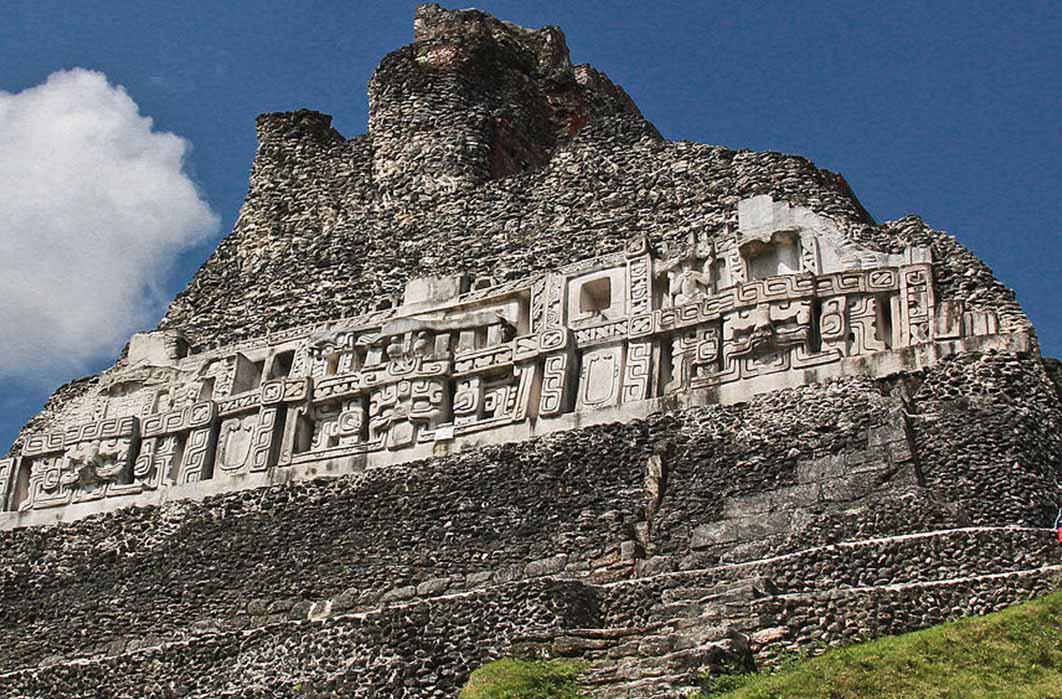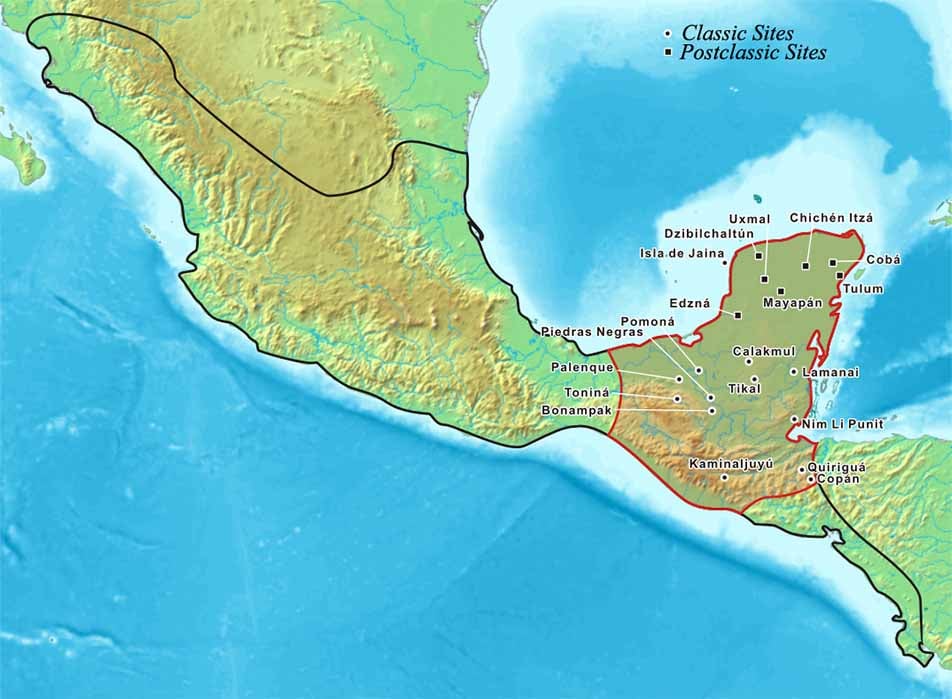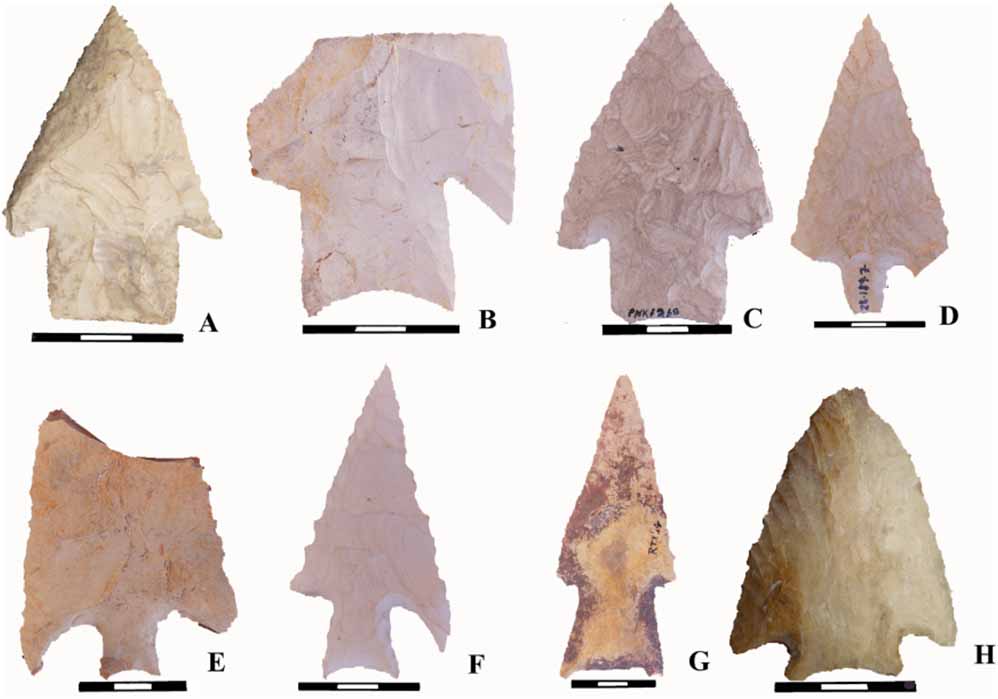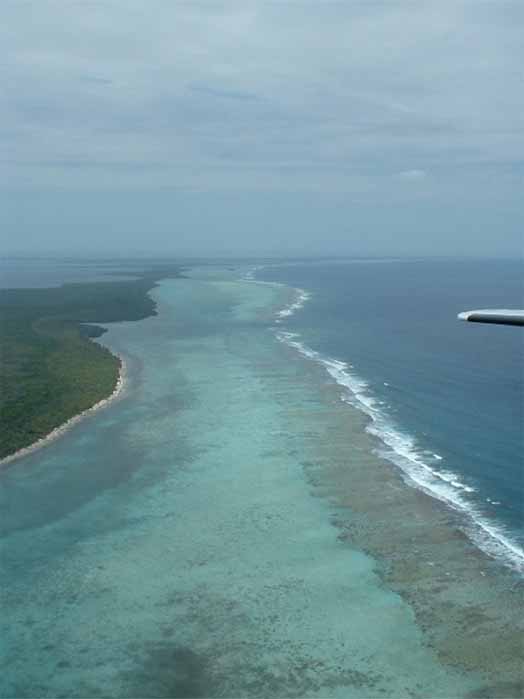
11,000 Years Of Ancient Culture In Belize
Not even 50 years ago, Belize, in Central America, gained independence on September 21, 1981, but its history dates back to 9,000 years. In prehistory the territory was home to several ancient civilizations, including the Maya from around 1500 BC, who thrived between 250 and 900 AD. During this time, the Maya built impressive cities, developed a complex system of writing and mathematics, and made important scientific and cultural contributions to their ancient environment.

The extent of the Maya civilization territories in Mesoamerica. Lamanai is in Belize (Kmusser /CC BY-SA 3.0)
Before the rise of the Maya Civilization in Belize the region was inhabited by various groups of indigenous people, often referred to as the pre-Maya or the Proto-Maya, who lived off the land as hunter-gatherers and practiced simple agricultural lifestyles.
Pre-Maya Belize
The first people in Mesoamerica are believed to have arrived around 12,000 years ago during the last Ice Age and these hunter-gatherers lived on wild plants and animals for sustenance. Around 2,500 BC, the first civilization in Mesoamerica emerged in the region known as the Olmec heartland, which is located along the Gulf Coast of Mexico. The Olmec Civilization was characterized by the creation of large stone sculptures, such as the famous colossal heads, as well as advances in agriculture, art, and architecture. The Olmecs were also known for their trading networks, which allowed them to obtain exotic goods from distant regions and as the Olmec Civilization declined, other civilizations rose to prominence in Mesoamerica including the Zapotec, Maya, and Aztec. Each of these civilizations made significant contributions to the development of Mesoamerican culture, including advances in writing, mathematics, astronomy, and architecture.
- Pumas, Cougars And Jaguars: Feline Deities Of Prehistoric South America
- Cotzumalguapa: Evidence of Pre-Columbian Transoceanic Contact
- Excavations at Maya Settlement in Belize Tell Story of Maya Golden Age
With clouds and fog frequently covering the sharp ridges, the Maya Mountains in southern Belize can be challenging to navigate. While this abundant precipitation is beneficial for the lush rainforest that blankets the region, it has posed a significant problem for archaeologists as the climate promotes the rapid decomposition of human bones, which are a valuable source of research of ancient cultures. Notwithstanding, the earliest evidence of human habitation in Belize dates back to the Preceramic Period, around 9000 BC, and evidence suggests small groups of nomads moved from place to place hunting and foraging for food and resources using two types of lithic technologies. According to the 2011-paper, The Preceramic and Early Ceramic Periods in Belize and the Central Maya Lowlands, these early hunters developed “Clovis-style fluted lanceolate and Fell's Cave-style fluted fishtail bifaces.”

Preceramic projectile points from Belize (Keith M. Prufer et al/ CC BY-SA 4.0)
Recent radiocarbon dating of one alternately-bevelled biface blade recovered from the Mayahak Cab Pek and Tzibte Yux rock shelters site in southern Belize, yielded an early date of 10,450 BC, and three Lowe-style stemmed bifaces dated to between 8,275 BC and 6650 BC. It was discovered that non-bifacial lithic tools replaced these two technologies when people began settling in small farming villages along the north coast during the late Archaic Period, around 3,400 BC. While these people continued hunting and foraging, they also domesticated wild maize, beans, squash, and chili peppers, which remain staples in the Central American diet today.





